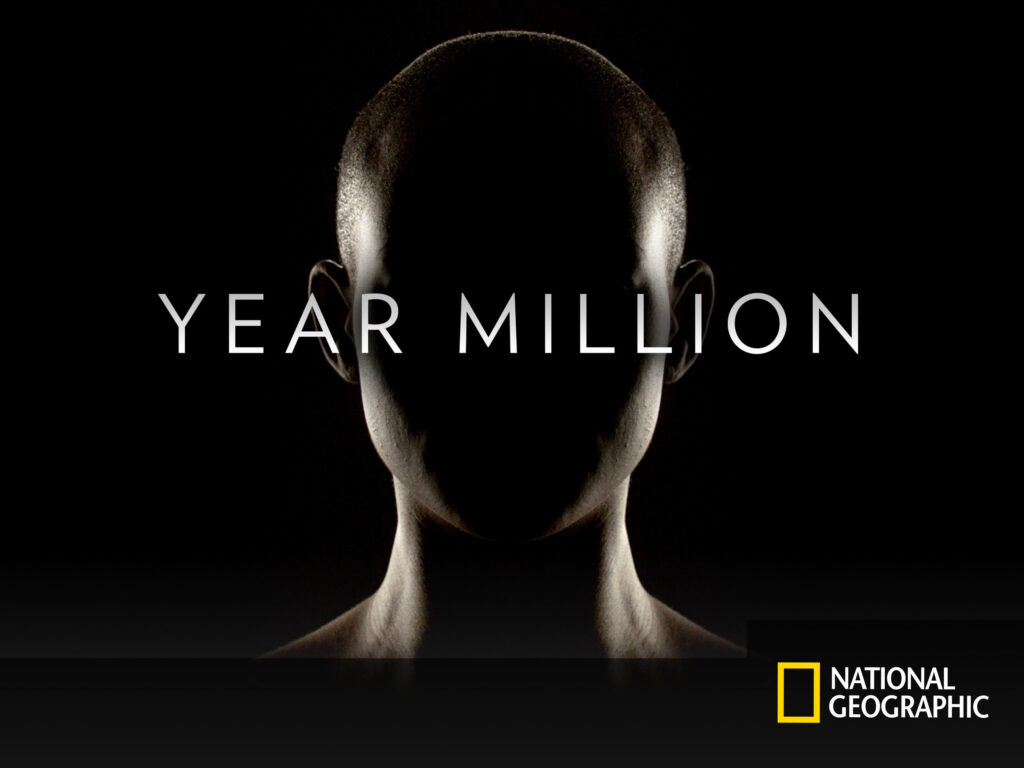Table of Contents
What is “Year Million”?
“Year Million” refers to a speculative and visionary concept exploring what humanity and the world might look like in a far-off future. It stems from both scientific hypotheses and imaginative extrapolation of trends in artificial intelligence (AI), robotics, biotechnology, and cosmology. The idea became popularized by a National Geographic documentary series that visualized these futuristic scenarios and delved into how advancements in technology could fundamentally transform human life, society, and even our biology.
The term is not a fixed timeline but a metaphor for a distant future when humanity may transcend its current state. It touches on topics like the merging of humans and AI, the potential for immortality, colonization of other planets, and philosophical shifts that might accompany these advancements. This exploration is deeply tied to theories like the Technological Singularity, where AI surpasses human intelligence, leading to exponential growth in innovation and societal changes.

Alpha Singularity and “Homo AI”
The Technological Singularity, also referred to as the Alpha Singularity, represents a theoretical moment when artificial intelligence reaches and surpasses human intelligence, creating a cascade of innovations that redefine the nature of existence. Post-singularity, humanity could evolve into a hybrid species, often conceptualized as “Homo AI.” In this state, humans and AI would integrate seamlessly, erasing distinctions between biological and synthetic consciousness.
Key implications of this evolution include:
- Enhanced Cognition: Humans may adopt AI augmentations to achieve superintelligence, enabling unparalleled creativity and problem-solving.
- Biological Redefinition: Advances in genetic engineering and AI integration might lead to immortality or post-biological life forms.
- Societal Transformation: As machines manage labor and governance, humanity could transition into a post-scarcity economy, focusing on intellectual and creative pursuits.
Latest Humanoid Robots in Beta Testing
As humanity progresses toward this envisioned future, the development of humanoid robots plays a critical role. These robots are the forerunners of “Homo AI,” bridging the gap between human abilities and machine capabilities.
- Tesla Optimus Gen 2:
- A humanoid robot designed for domestic tasks, featuring advanced actuated hands with 22 degrees of freedom for delicate operations. It’s being tested in Tesla factories, with goals of consumer use within a few years Gadget Review Electrek.
- 1X NEO Beta:
- A lightweight humanoid robot with soft, cushioned exteriors, reducing risks during human interaction. Designed for consumer use, it emphasizes safety and agility The Robot Report.
- Fourier GR-1:
- Known for its agility and precision, this mass-produced robot is capable of high-performance tasks such as warehouse management and obstacle navigation Gadget Review.
- Astribot S1:
- A personal chef robot capable of preparing gourmet meals and performing household chores. Its precision makes it a boon for busy households Gadget Review.
- Figure 02:
- A general-purpose humanoid robot designed for tasks ranging from package delivery to cooking. It combines utility and aesthetics for home and industrial applications Gadget Review The Robot Report.
What is “Year Million”?
“Year Million” refers to a speculative and visionary concept exploring what humanity and the world might look like in a far-off future. It stems from both scientific hypotheses and imaginative extrapolation of trends in artificial intelligence (AI), robotics, biotechnology, and cosmology. The idea became popularized by a National Geographic documentary series that visualized these futuristic scenarios and delved into how advancements in technology could fundamentally transform human life, society, and even our biology.
The term is not a fixed timeline but a metaphor for a distant future when humanity may transcend its current state. It touches on topics like the merging of humans and AI, the potential for immortality, colonization of other planets, and philosophical shifts that might accompany these advancements. This exploration is deeply tied to theories like the Technological Singularity, where AI surpasses human intelligence, leading to exponential growth in innovation and societal changes.
Alpha Singularity and “Homo AI“
The Technological Singularity, also referred to as the Alpha Singularity, represents a theoretical moment when artificial intelligence reaches and surpasses human intelligence, creating a cascade of innovations that redefine the nature of existence. Post-singularity, humanity could evolve into a hybrid species, often conceptualized as “Homo AI.” In this state, humans and AI would integrate seamlessly, erasing distinctions between biological and synthetic consciousness.
Key implications of this evolution include:
- Enhanced Cognition: Humans may adopt AI augmentations to achieve superintelligence, enabling unparalleled creativity and problem-solving.
- Biological Redefinition: Advances in genetic engineering and AI integration might lead to immortality or post-biological life forms.
- Societal Transformation: As machines manage labor and governance, humanity could transition into a post-scarcity economy, focusing on intellectual and creative pursuits.
Latest Humanoid Robots in Beta Testing
As humanity progresses toward this envisioned future, the development of humanoid robots plays a critical role. These robots are the forerunners of “Homo AI,” bridging the gap between human abilities and machine capabilities.
- Tesla Optimus Gen 2:
- A humanoid robot designed for domestic tasks, featuring advanced actuated hands with 22 degrees of freedom for delicate operations. It’s being tested in Tesla factories, with goals of consumer use within a few yearsGadget ReviewElectrek.
- 1X NEO Beta:
- A lightweight humanoid robot with soft, cushioned exteriors, reducing risks during human interaction. Designed for consumer use, it emphasizes safety and agilityThe Robot Report.
- Fourier GR-1:
- Known for its agility and precision, this mass-produced robot is capable of high-performance tasks such as warehouse management and obstacle navigationGadget Review.
- Astribot S1:
- A personal chef robot capable of preparing gourmet meals and performing household chores. Its precision makes it a boon for busy householdsGadget Review.
- Figure 02:
- A general-purpose humanoid robot designed for tasks ranging from package delivery to cooking. It combines utility and aesthetics for home and industrial applicationsGadget ReviewThe Robot Report.
Robots as Milestones Toward the Singularity
These robots symbolize humanity’s strides toward the Alpha Singularity. While they are not yet autonomous or sentient, their capabilities are paving the way for more integrated and intelligent systems. For instance, Tesla Optimus robots are already assisting in factory settings, hinting at a future where robots and humans cohabit and co-work seamlessly.
Exploring the Future of Humanity
Year Million is a concept that invites us to think about the far future of humanity, technology, and the planet. Unlike predictions for the next century, which are grounded in emerging technologies and trends, Year Million envisions a time so distant that humanity as we know it could evolve into something entirely unrecognizable. The term draws its name from the idea of projecting forward a million years—a speculative exercise in understanding how advances in artificial intelligence (AI), biology, and cosmology might shape our existence.
In this blog post, we’ll dive into the origins, contributors, research, and implications of the Year Million concept. We’ll also explore Alpha Singularity, a hypothetical point where AI evolves into a new form of existence—referred to here as Homo AI.
The Origins of the Year Million Concept
The concept of Year Million isn’t tied to a single creator but has emerged from a synthesis of ideas in futurism, science fiction, evolutionary biology, and AI research. It gained prominence through:
- Science Fiction:
- Authors like H.G. Wells, Olaf Stapleton, and Arthur C. Clarke explored far-future scenarios in their works. Stapleton’s Last and First Men (1930) was particularly influential, describing human evolution across two billion years.
- The 2008 National Geographic series Year Million explored how humanity might look in the distant future, sparking widespread interest.
- Futurist Thinkers:
- Ray Kurzweil’s book The Singularity is Near (2005) discussed the exponential growth of AI and biotechnology, leading to post-human futures.
- Nick Bostrom’s work on superintelligence and existential risks provided a foundation for understanding how technology could shape humanity’s distant future.
- Academic Research:
- Scientists like Carl Sagan and Stephen Hawking speculated on humanity’s place in the cosmos and the long-term trajectory of our species.
- Transhumanist thinkers such as Anders Sandberg and Max More advocate for technological enhancements that might pave the way for Year Million scenarios.
Key Elements of the Year Million Vision
- Post-Human Evolution:
Year Million envisions humans evolving or augmenting themselves to such an extent that they become a new species. Genetic engineering, brain-computer interfaces, and bio-enhancements could lead to beings that are smarter, stronger, and potentially immortal. - AI Ascendancy:
Artificial intelligence could outpace human intelligence, leading to a world where humans are either replaced or integrated into AI systems. This era might mark the transition to what we call the Alpha Singularity. - Cosmic Expansion:
Humanity may become a spacefaring species, colonizing other planets or even galaxies. Advanced propulsion technologies and terraforming could make this a reality. - Interfacing with Reality:
With technologies like quantum computing and neural networks, humans or post-humans might manipulate reality at the quantum level, creating simulations indistinguishable from reality.
Research and Insights
Theoretical Underpinnings
The concept of Year Million draws from several disciplines:
- Evolutionary Biology: Examines how genetic and environmental factors shape species over time. Researchers like Richard Dawkins suggest that future evolution might be driven by technology rather than natural selection.
- AI Research: Pioneers like Alan Turing and Marvin Minsky laid the groundwork for understanding machine intelligence. More recently, DeepMind and OpenAI have pushed the boundaries of AI capabilities.
- Philosophy: Thinkers like Bostrom raise ethical concerns about humanity’s transition to post-human forms, questioning the risks of creating superior AI entities.
Prominent Projects and Collaborations:
- Blue Brain Project: Simulating the human brain to understand consciousness, a step toward replicating it artificially.
- SpaceX and NASA: Exploring technologies for interplanetary colonization, critical for humanity’s long-term survival.
- CRISPR and Genetic Engineering: Allowing for precise modifications to DNA, paving the way for enhanced humans.
Challenges and Ethical Dilemmas
While the Year Million vision is compelling, it raises significant challenges:
- Existential Risks: Could advanced AI lead to unintended consequences, including the extinction of humanity?
- Ethics of Enhancement: Should we enhance ourselves to the point where we’re no longer recognizably human?
- Inequality: Technological advancements might deepen societal divides if only a privileged few have access to life-extending or intelligence-boosting technologies.
Conclusion
The concept of “Year Million” and the emergence of “Homo AI” are not just imaginative speculations but plausible trajectories based on current technological progress. Humanoid robots, like Tesla Optimus and 1X NEO, represent initial steps toward this vision, blending human-like abilities with machine precision. As AI continues to evolve, the line between human and machine may blur, culminating in a singularity that transforms our existence fundamentally. The journey toward “Year Million” challenges us to think deeply about ethics, purpose, and our role in shaping the future.
For more insights into these robots and their developmental phases, you can explore resources from The Robot Report, Electrek, and Gadget Review.
Derivations and Conclusions
The concept of Year Million is not a fixed prediction but a thought experiment that pushes us to consider the long-term implications of our choices today. It derives from a blend of:
- Scientific Extrapolation: Based on known trends in technology and biology.
- Speculative Fiction: Offering imaginative yet plausible scenarios.
- Philosophical Inquiry: Exploring what it means to be human and whether that identity should evolve.
Conclusions:
- Year Million offers a framework to envision a radically different future shaped by intelligence, whether biological or artificial.
- The Alpha Singularity and Homo AI represent the culmination of human ingenuity but also a departure from traditional definitions of humanity.
- The journey to Year Million depends on our ability to balance innovation with ethical foresight, ensuring that future transformations benefit all of humanity.
Related Resources and Further Reading
- Books:
- Research Papers:
- Videos and Documentaries:
- AI Research Links:
- Articles:


